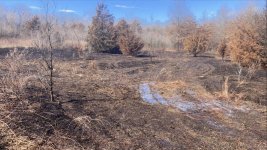lazy_turtle
Member
Hey all,
I bought a farm last November. Some of the areas I want to plot haven’t been touched in 30+ years, so I’ve been going back and forth on if I never till or never use herbicides.
Is it possible to do neither with much success??
If you had to choose between no-till and no herbicides, which would you choose?
I was about to give up on the dream of doing neither, but as if it was a sign, a random grass fire hit my farm and almost completely cleared the plots. See pic. Is there anything I can throw down now to suppress weeds?
I bought a farm last November. Some of the areas I want to plot haven’t been touched in 30+ years, so I’ve been going back and forth on if I never till or never use herbicides.
Is it possible to do neither with much success??
If you had to choose between no-till and no herbicides, which would you choose?
I was about to give up on the dream of doing neither, but as if it was a sign, a random grass fire hit my farm and almost completely cleared the plots. See pic. Is there anything I can throw down now to suppress weeds?



